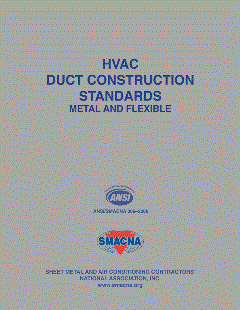So when it came time to open a new office in Columbus, OH, Turner Construction Co. had a reputation to live up to. Not only did the company want a space that looked great, but they wanted a mechanical system that would help them achieve Leadership in Energy and Environmental Design certification.
After 14 years in the northern suburb of Worthington, the company decided in 2010 to move to downtown Columbus.
“We wanted a headquarters presence close to our many Columbus clients,” said Kurt Smith, Turner’s regional preconstruction manager.
M+A Architects in Columbus was hired to design Turner’s new office after evaluating several options in the downtown Columbus area.
“We looked at three options,” said M+A associate Ryan Ware. Of those, Turner decided on a 30,000-sq-ft historic structure — a factory built in 1910 to manufacture mattress box springs.
For its new headquarters, Turner said it envisioned a space that would showcase its distinguished construction signature. The interior would be an open space showing off the old bones of the original building — the layered brick walls, the columns and trusses cut from 19th-century oaks, and the refinished old timber floors. The exposed ceilings would highlight the circuitry of lighting, HVAC linesets, and indoor fan coils.
“Turner’s landlord tore down part of the building to make way for a parking lot, keeping the best-looking section of the old factory, and leaving us with 13,000 sq ft for our design work,” Ware said. “Turner then leveled the first floor slab, cut out several columns, and removed three floor trusses to open up space for meeting rooms, and built a new entry feature. When it comes to aesthetics, Turner knows exactly what it wants.”
But the company wanted more than just aesthetics. For this major restoration, Turner wanted its new offices to boast a LEED® certification.
“In our planning and design work, they asked us to aim for LEED Silver as a minimum,” said Ware.
To match this vision for exposed, natural interior spaces, Turner brought in Columbus-based Dynamix Engineering Ltd. Frank Hartley was the project manager for the Turner job.
“When we first looked at this extraordinary interior, with very old conveyor belts running through the ceiling to the second floor, I thought to myself, forget all about plenums and space for mechanical rooms and systems,” he said.
Hartley understood that he was dealing with an owner that understands the construction process, so Dynamix needed to select the HVAC system carefully. Hartley sat down with Ware, Smith, and Turner’s mechanical estimator Scott Blair to discuss the attributes of four possible systems from which to select. The team discussed using a VAV system with hot water reheat; a VAV system with electrical reheat; water-source heat pumps; and VRF zoning systems.
The Dynamix MEP team rated the benefits of each system. The Turner team selected the VRF zoning system from Mitsubishi Electric U.S. Cooling & Heating Division.
In Hartley’s opinion, this VRF technology and equipment design were a perfect match for buildings constructed before air conditioning was invented. Because VRF zoning systems require little or no ductwork, Turner would avoid the huge energy loss associated with central forced-air systems. Up to 30% of the energy in ducted systems is lost in the ductwork itself, through leaks and other inefficiencies. With a VRF zoning system, the compact compressors and components can be installed in smaller indoor and outdoor spaces. These systems require less piping and duct space. Because the VRF zoning system uses smaller VRF refrigerant piping, it gives back space in the form of higher ceilings.
Hartley went on to explain that VRF zoning systems are 31% lighter than chilled-water systems, making them easier to handle and less expensive to install.
“Turner managers were especially impressed with the sound attenuation of the interior units and the connecting piping,” he said. “They were surprised that someone could stand a few feet beneath an indoor unit and not hear it operating.”
Blair said deciding on the VRF system was the way to go.
“The selection of this VRF zoning system made me a believer,” he said. “At Turner, we are recognized for our pioneering work in the green building movement. The thing that makes me happy is we proved that it is possible to bring century-old spaces up to 21st-century standards. This (VRF technology) is ideal for an office environment and has enabled us to pursue LEED Gold.”










